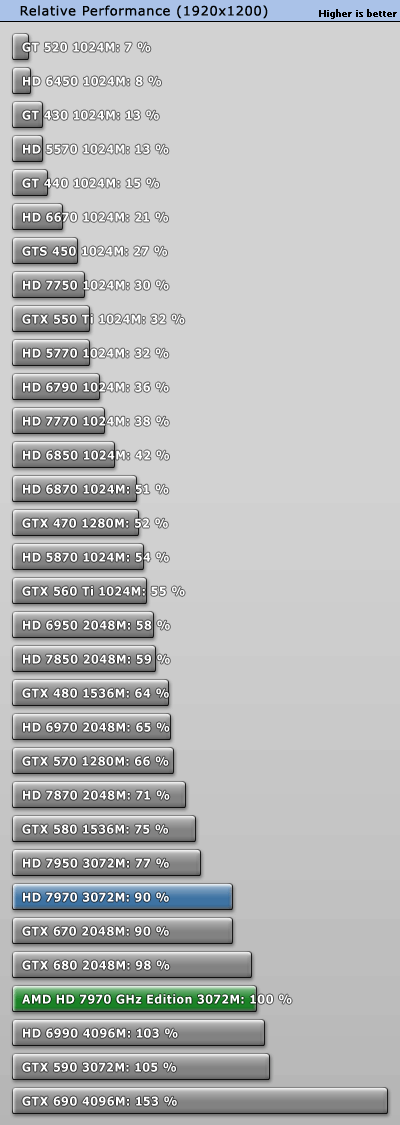My previous post was an explanation of the illogicality of yours. But if you can't be bothered with it, the first sentence and the very fact that there are different differences at different resolutions should suffice. It is not so much that the 690 is a different amount faster at different resolutions as it is that the 690 is to a different extent held up by other bottlenecks at different resolutions. In the absence of extra-GPU bottlenecks the 780 (Titan) will be in a worst-case scenario 50% faster than the 680. If memory bandwidth doesn't hold things up, you can call that figure 70%. Of course in reality we'll see a much, much smaller difference, because CPU bottlenecks will hold things up to at least some degree in nearly every game.






